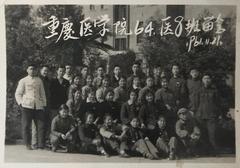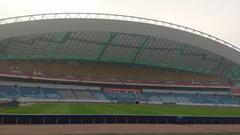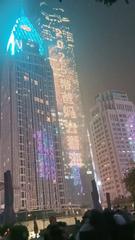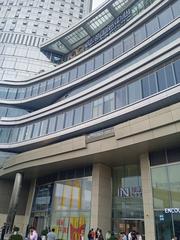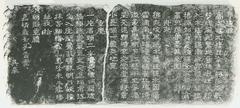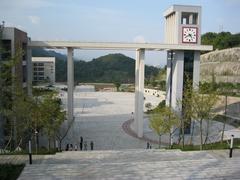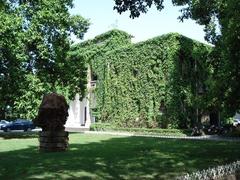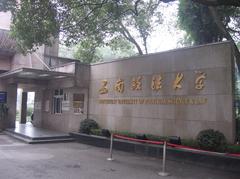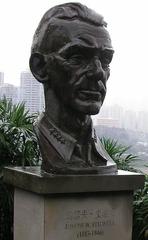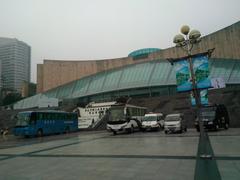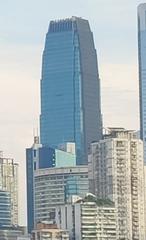
Shibanpo Yangtze River Bridge: Visiting Hours, Tickets, and Comprehensive Travel Guide
Date: 04/07/2025
Introduction
Rising above the Yangtze River, the Shibanpo Yangtze River Bridge is not just a critical transportation link but a powerful symbol of Chongqing’s transformation into a modern metropolis. As the city’s first major road bridge across the Yangtze, it has played a pivotal role in urban development, economic integration, and cultural identity since its original completion in 1996, followed by expansion in 2006. Today, the bridge is both an engineering marvel and a must-visit historical site, offering free public access, spectacular views, and proximity to some of Chongqing’s top attractions.
This detailed guide explores the Shibanpo Yangtze River Bridge’s history, architectural achievements, cultural significance, and provides travelers with all the essential information needed for an enriching visit—including hours, tickets, accessibility, travel tips, and nearby highlights.
Table of Contents
- Introduction
- History and Construction
- Architectural and Engineering Significance
- Cultural and Economic Impact
- Visiting Information
- Frequently Asked Questions (FAQ)
- Summary and Final Tips
- References
History and Construction
Early Planning and Necessity
By the 1970s, Chongqing’s rapid population and industrial growth created urgent demand for a reliable crossing over the Yangtze River. Before the bridge, ferries and limited roadways were unable to handle increasing traffic between the city’s core (Yuzhong Peninsula) and the Nan’an District (China Daily).
First Bridge: Design and Completion
Initiated in the 1980s, the original Shibanpo Yangtze River Bridge was designed as a prestressed concrete continuous box girder bridge. Construction began in 1986, overcoming challenges such as deep-water foundations and strong river currents. The bridge opened in 1996, measuring roughly 1,200 meters in length, with a 330-meter main span—one of the longest of its kind in China at the time—accommodating four vehicular lanes (Structurae; Chongqing Municipal Government).
Expansion: The Second Bridge
As Chongqing’s population exceeded 30 million in the early 2000s, congestion called for a second span. Approved in 2002, the parallel bridge was completed in 2006 with a wider deck (22.5 meters) and six traffic lanes. Together, the twin bridges form a vital urban corridor, efficiently linking the north and south banks (China.org.cn; Chongqing News).
Architectural and Engineering Significance
The Shibanpo Yangtze River Bridge is renowned for its use of advanced prestressed concrete and steel box girder technologies. These techniques, especially innovative during the 1980s and 1990s, allowed the bridge to span the wide, turbulent Yangtze while withstanding seismic activity and supporting high traffic volumes (China Bridge Net). Modern upgrades include LED lighting systems and advanced monitoring for structural health.
The bridge’s aesthetic integration into Chongqing’s dramatic skyline is enhanced by dynamic nighttime illumination and its sleek, streamlined design (Trip.com).
Cultural and Economic Impact
Cultural Significance
The Shibanpo Yangtze River Bridge is a celebrated emblem of Chongqing’s identity as the “City of Bridges,” a city with more than 10,000 bridges spanning rivers and valleys (ichongqing.info). Its completion was commemorated in local poetry and art, and it remains a subject of civic pride. Distinctive features include four 8-meter aluminum sculptures representing the seasons, created by artist Ye Yushan, now protected as cultural relics (chinawiki.net; galileiinstitute.it). The nightly illumination transforms the bridge into an urban spectacle.
Economic Role
The bridge dramatically improved mobility and economic integration across the Yangtze, reducing travel times and stimulating the urbanization of Nan’an District. It is a crucial exit corridor to southern China and supports Chongqing’s logistics and trade ambitions (chinawiki.net; wikipedia). Its construction, costing RMB 64.68 million for the original span and US$40 million for the second, has paid dividends in urban growth and land value (trek.zone). The bridge is also a tourism magnet, featured in city tours, and beloved for its skyline views and proximity to other attractions.
Visiting Information
Visiting Hours & Tickets
- Hours: Open to pedestrians and vehicles 24/7. The best experience is generally between 6:00 AM and 11:00 PM, when lighting and safety are optimal.
- Tickets: Free for all visitors; no permits required.
How to Get There
- By Metro: Shibanpo Station (Line 3) is the closest, within walking distance of the bridge’s southern end.
- By Bus: Multiple city bus routes stop nearby, including at Zhongxing Road (iChongqing).
- By Car: Parking is available, especially on the Nan’an side, but public transport is advisable during busy periods.
Accessibility and Facilities
- Pedestrian Walkways: Wide, level, and separated from vehicular lanes for safety. Ramps and smooth pathways accommodate wheelchairs and strollers.
- Cycling: Marked cycling lanes are available.
- Lighting: The bridge is well-lit at night, enhancing both safety and scenic value.
- Amenities: No restrooms or vendors on the bridge, but numerous options are available in adjacent urban districts.
Travel Tips and Photography
- Best Times: Evening visits for illuminated views; mornings for softer light and fewer crowds.
- Photography: Bring a tripod for night shots. The midpoint offers the best panoramas of the river and skyline (Trip.com Blog).
- Seasonal Considerations: October to April offers comfortable weather; fog is common in late autumn and early spring.
Nearby Attractions
- Three Gorges Museum: Regional history and culture.
- Luohan Temple: Historic Buddhist temple.
- Nanbin Road: Famous for dining, nightlife, and riverside promenades.
- Yangtze River Cruises and Cableway: For alternative views of the bridge and city (Trip.com).
Frequently Asked Questions (FAQ)
Q: What are the visiting hours?
A: Open to the public 24 hours a day, with recommended visits between 6:00 AM and 11:00 PM.
Q: Is there an entrance fee?
A: No, access is free for all.
Q: How do I get there?
A: By metro (Line 3, Shibanpo Station), bus, taxi, or car.
Q: Is the bridge wheelchair accessible?
A: Yes, with accessible walkways and ramps.
Q: Are guided tours available?
A: Not specifically for the bridge, but many city tours include it as a highlight.
Q: Can I cycle across the bridge?
A: Yes, there are marked cycling lanes.
Q: What are the best photo spots?
A: Midpoint of the pedestrian walkways for river and skyline views, especially at sunset and night.
Summary and Final Tips
The Shibanpo Yangtze River Bridge is a symbol of Chongqing’s modern spirit and engineering achievements. Its dual spans, innovative design, and cultural artworks make it a must-see for visitors. Free, 24/7 access and excellent connectivity to public transport and nearby attractions ensure convenience for all travelers. For the best experience, visit at sunset or after dark to witness the spectacular illumination.
Final Tips:
- Wear comfortable shoes for walking.
- Check weather forecasts for fog.
- Bring water and a camera.
- Use public transport during peak hours.
- Explore nearby sites for a full Chongqing experience.
References
- Structurae Database Entry
- China Daily
- Chongqing Municipal Government
- Xinhua News
- China.org.cn
- Chongqing News
- Trip.com Guide to Shibanpo Yangtze River Bridge
- Chinawiki.net
- ichongqing.info
- galileiinstitute.it
- Wikipedia
- Dlteng.com
- Trek.zone
- iChongqing
- Trip.com Blog
All factual statements are supported by referenced sources. Images with optimized alt tags such as “Shibanpo Yangtze River Bridge illuminated at night with skyline” are recommended for visual enhancement and SEO.


